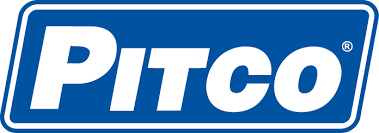Here’s Where to Start to Cut Commercial Frying Oil Costs

Commercial frying oil costs are rising faster than many operators can keep up with. Between inflation, supply chain hiccups, and global tariffs, frying oil has become one of the most unpredictable expenses in a commercial kitchen. But the real kicker? Most operations waste oil well before its lifecycle is up, creating an unnecessary drain on profits, labor, and food quality.
This is where built-in fryer filtration makes a real impact. It’s the fastest way to reduce oil usage without cutting quality. Kitchens that filter regularly with the right equipment can cut oil costs by up to a third. The bonus? It also improves food consistency, streamlines workflow, and removes one of the messiest tasks in the back-of-house.
Oil Waste Is Eating Your Budget
Most operators know oil prices are rising. What they may not realize is how much they’re overusing it. Without filtration, every batch leaves behind crumbs, starch, and debris that speed up oil breakdown. When oil burns out early, the food suffers. And replacing oil more often than necessary? That adds up quickly.
The problem is made worse by the day-to-day chaos of running a kitchen where oil isn’t constantly monitored closely. Some staff may dump oil too early to avoid complaints. Others may delay changes too long, risking the flavor and texture of food. In both cases, you’re losing either in product quality or in cost.
Filtration to the Rescue: Cleaner Oil, Lower Costs
Built-in fryer filtration systems address this head-on. By removing the particles that cause oil to degrade, filtration helps maintain oil integrity longer. This reduces the frequency of oil changes while keeping food crisp, clean, and evenly cooked.
Filtration systems in Pitco fryers are integrated directly into the fryer, so operators can run them between shifts or even during slower parts of service. It’s quick, efficient, and doesn’t interfere with daily workflow.
The impact is immediate. With filtration, oil lasts longer, food quality is more consistent, and kitchens don’t need to reorder oil as often. That’s savings across the board: on product, on process, and on performance.
Filtration Saves Time and Labor, Too
Managing oil manually is more than just a hassle. It’s a safety risk and a productivity killer. Draining hot oil, scrubbing the fryer, and disposing of old oil takes up time and puts foodservice staff at risk for burns and injuries.
Automated filtration removes those pain points. With the push of a button, the fryer handles the filtering process on its own. There are no extra tools, messy buckets, or interruptions to service.
This is a big win for teams already stretched thin. Staff can focus on cooking, not fryer maintenance, and managers can stop worrying about whether oil changes are happening on schedule. It’s a safer, smarter way to run a kitchen.
Oil Cost Calculator: How Much Could You Save?
Want to know what this looks like in dollars? Pitco’s free Oil Savings Calculator gives you a clear picture. Just enter your oil type, fryer size, usage patterns, and how often you change the oil. The tool does the rest.
Most operators are surprised by how much they could be saving. Add in labor savings and improved customer satisfaction, which could turn into repeat sales, and the return on investment is hard to ignore.
The Bottom Line
If you’re looking for a real way to cut costs without cutting corners, start with built-in fryer filtration. It helps reduce commercial frying oil costs, improves product consistency, and frees up staff from one of the most unpleasant kitchen tasks.
Frying oil will always be a necessary expense. But with the right systems in place, it doesn’t have to be a constant source of waste.
Topics
- Foods & Trends (91)
- Fryers (87)
- Oil (57)
- Fried Food (52)
- Filtration (32)
- See All Topics

